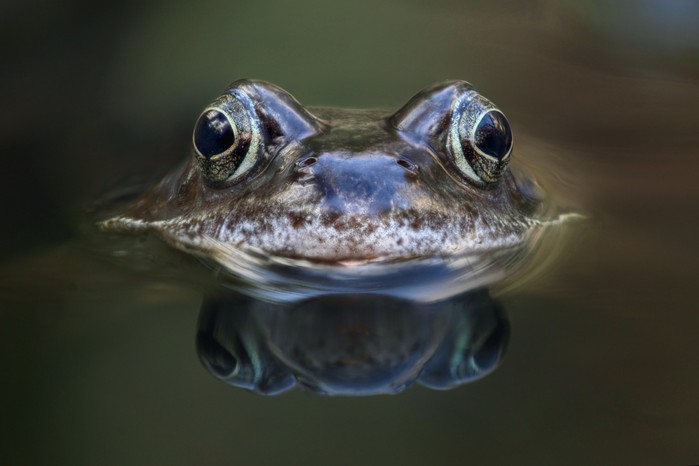
We should all be building a pond in the garden
Lia Leendertz reflects on the garden pond throughout the year, with extracts from her 2023 Almanac
There are many ways to mark a year, and to deepen your understanding of the seasons. In my annual book, The Almanac, I do this in as many ways as I can conjure up: the sky at night, sunrise times, moon phases and tides, seasonal food, gardening and folksongs, and for 2023 I have also looked at the changing seasons in the garden pond. Down there in the murky depths and in the pond edges and overhanging growth I have found myriad lives unfolding through the year: mating rituals, births and deaths, each species doing the cycle of the year in its own unique way.

Perhaps the single most useful thing one person can do to help wildlife is to build a pond in their garden or allotment. There was once a ‘dew pond’ in the corner of every field for livestock to drink from and they would be made use of not only by cows and sheep but by amphibians, insects, small mammals and birds. Most have been drained or filled in and of those that remain it is estimated that 80 per cent are polluted or degraded, chief pollutants being agricultural fertiliser ingredients nitrogen and phosphorus.
But garden ponds are insulated from many of the problems that countryside ponds face, and it is remarkably straightforward to create a pond that quickly becomes an intricate eco system supporting dozens of species. The phrase ‘build it and they will come’ could have been written for ponds: just make one and sit back and you will see.
Clearly now we are into the waning of the pond year. The great frenzied frog and toad mating of February is long behind us, the tadpoles turned to froglets turned to young adults; the iridescent dragonflies have emerged from their nymph-state, flown, mated and deposited their eggs; pond plants have exploded in a burst of spring greenery, flowered and set seed. All of that and more will come around again next year, but for now here is a glimpse at life in the pond in October.

The pond in October
Falling leaves are drifting onto the surface of the pond now, and the growth around the pond is dying back, taking on shades of gold, brown and red. The reeds and rushes are bowed from rain and wind and spiders’ webs are strung between them. The pond is filling up again with autumn rains; it can be brim full by the end of the month.
This month frogs will go into their version of hibernation, called ‘brumation’, a period of dormancy in which they will shut down their bodies to preserve energy. Frogs absorb oxygen in three different ways. Through their lungs, as you might expect, through the linings of their mouths, and via their skin, which must be moist at all times. Some will actually hibernate down at the bottom of the pond, digging into the mud and sitting out the coldest weather. Some will create their ‘hibernaculas’ in the mud at the edge of the pond and still others - including the year’s juveniles - will find nooks and crannies in log or rock piles nearby, anywhere that they can stay moist and keep off the worst of the cold until spring. You might spot a particularly fat frog at this time of year. This will be a female, already full of spawn, which she will carry all through the winter, ready for breeding time next February or March.
Toads overwinter in old upturned flowerpots, piles of leaf litter or under large stones. First frosts are a signal to many that the time for preparation is past, and the moment has come for them to tuck themselves away. Everything either dies with the coming of the frosts, or takes to the nooks and crannies around the pond, and the surface, once alive with pond skaters and whirligig beetles, is still and quiet. The pace of life has slowed dramatically, and the pond is ready for winter.
Lia's Almanac, a Seasonal Guide to 2023 is published by Gaia and is on sale now
Authors

Niwaki bundle worth £57 when you subscribe
Subscribe to Gardens Illustrated magazine and claim your Niwaki bundle worth £57
*UK only

Container Gardening Special Edition
The Gardens Illustrated Guide to Container Gardening.
In this special edition, discover colourful flower combinations and seasonal planting schemes for pots designed by leading plantspeople, and essential know-how for container gardening success. Just £9.99 inc UK p&pBy entering your details, you are agreeing to our terms and conditions and privacy policy. You can unsubscribe at any time.

Gardens of the Globe
From botanical wonders in Australia to tranquil havens closer to home in Ireland, let this guide help you to discover some of the most glorious gardens around the world
By entering your details, you are agreeing to our terms and conditions and privacy policy. You can unsubscribe at any time.




